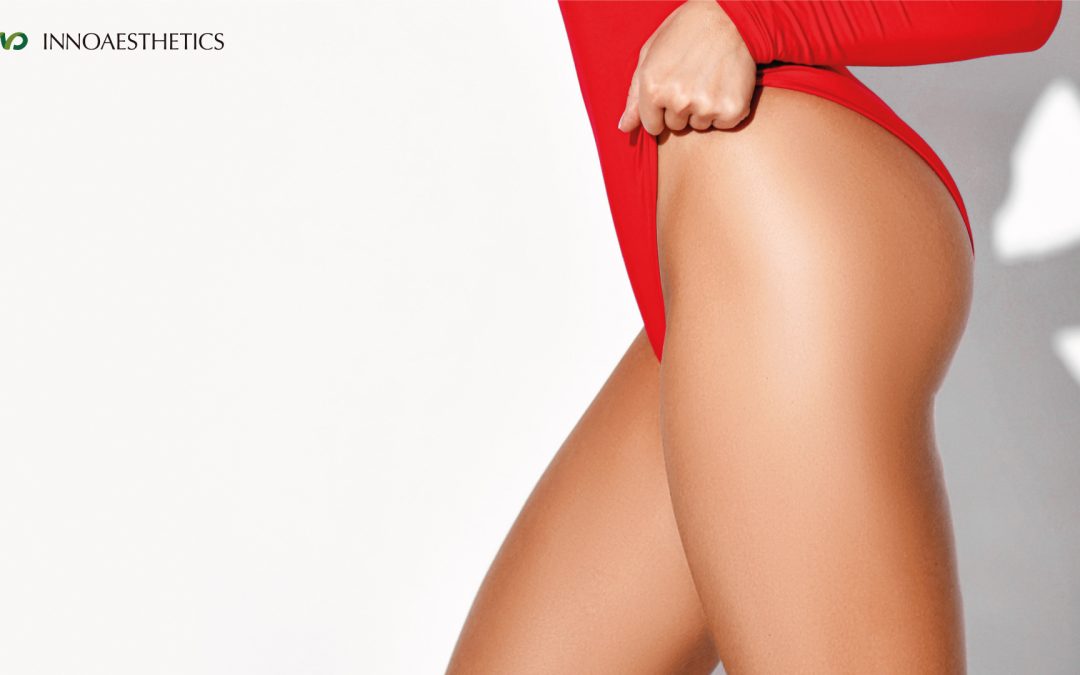Cellulite is the nightmare of most women. It can appear as soon as in your 20s or even earlier, and it gets worse with age. As collagen production decreases, the skin becomes thinner and less elastic, making your skin looser and cellulite more visible.
According to research, the incidence rises exponentially with sedentarily. Therefore, if you are bothered by it, the first step to fighting it is adding some physical activity to your daily routine. I know time is gold, and not everyone can spend one hour a day in the gym, but even as little as 10- or 15-minutes glute workouts a day will help if you are constant.
The second step is to identify the type of cellulite you have to find the most effective product or treatment for you.
A LOWDOWN ON CELLULITE
Characterized by dimpling or “orange peel” skin, as it is popularly known, cellulite is a skin ailment that can occur in any part of the body. However, it is more common in areas with more fatty tissue like buttocks, thighs, lower abdomen, upper arms, or even around the knees.
It affects mostly women – 90% of women around the glove, while only 10% of men.
Cellulite occurs due to alterations in the connective tissue under the skin.
Try to picture small compartments in which liquid fat is stored. These fat compartments are located in the connective tissue – in the deepest layer of the skin. When the adipocytes (liquid fat) increase, these compartments swell and deform. It gives place to an irregular pattern that looks like bumpy skin. You can see it more clearly in the image below.

Although the causes and predisposition to cellulite are still being evaluated, inactivity, fluid retention, poor circulation, weight gain, and hormones are common triggering factors.
TYPES OF CELLULITE
Cellulite can be divided into 3 types or degrees:
-
ADIPOSE CELLULITE
This type of cellulite usually appears on thighs and buttocks and looks like untoned skin with some bumps and dimples. It is painless and soft to the touch, and is more noticeable when sitting or lying than in a standing position.
It is also the easiest one to correct. To reduce it, you can go on a diet or avoid highly processed food and do some exercise to burn the excess of fat in the affected area and prevent water retention. We also recommend applying a cellulite cream once or twice a day for a few months.
If this is not enough or you need fast results, the best option is to ask your aesthetic expert to apply a transdermal solution to help you remove the excess of fat in a safe way.
-
FIBROUS CELLULITE
Also known as hard cellulite, this type is more difficult to fight than the previous one. Hard cellulite occurs when the condition has worsened, and the “bumps” have hardened and compacted, becoming a little painful to the touch in some cases.
To get rid of this type of cellulite you need to combine in-office treatment, a cellulite cream, and, if possible, healthy food habits and sport – to prevent its recurrence.
-
EDEMATOUS CELLULITE
It is the most severe type of cellulite and results from poor circulation and severe fluid retention. It commonly occurs in legs, including knees and lower legs. Water retention makes the legs swell and gradually lose their natural shape.
Edematous cellulite can be painful to the touch or after sitting for long hours.
This type of cellulite requires in-office treatment, or it can get worse and more painful. Furthermore, some physical exercise is, if not a must, highly recommended in these cases as it is the best way to make your blood flow and improve circulation. If you do not feel like jogging or going to the gym, just walking or climbing stairs are great workouts.
Also remember the importance of drinking water regularly along the day to avoid water retention and prevent or reduce all types of cellulite.





